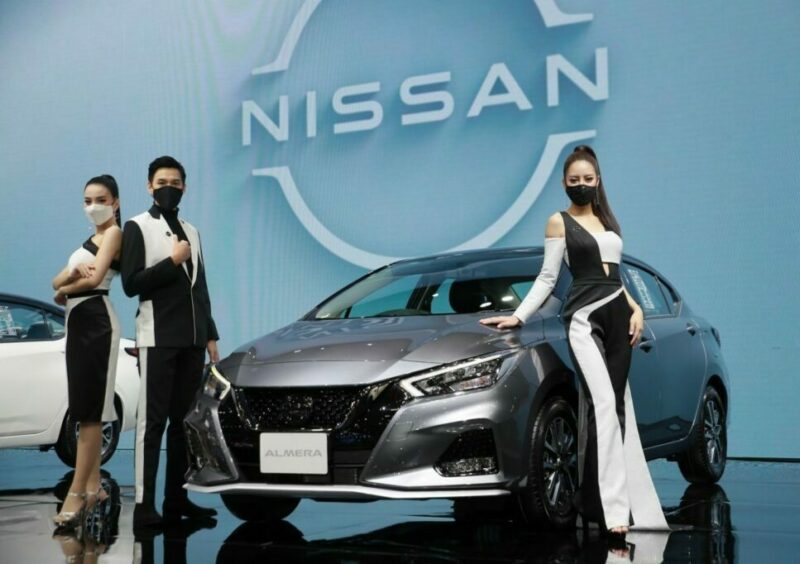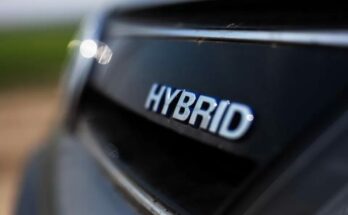There has been a lot of propaganda about the benefits of hybrid cars and why they are crucial for the country ever since Indus Motor Company (IMC), the company responsible for assembling Toyota cars in Pakistan, decided to invest in hybrid technology to introduce a locally assembled Corolla Cross.
We have discussed plenty of times that the Corolla Cross is not the most fuel-efficient nor the most affordable hybrid car out there. It certainly has a hybrid badge on it, but it will cater to a very specific set of people with strong purchase power and will be sold in limited numbers which will have a negligible impact on the environment as well as the country’s fuel import bill.
Related: Are Hybrid Cars a Mid-Term Solution Before Launching EVs in Pakistan?
It’s also strange that so far, hybrid cars are being marketed as “premium offerings” and the tech is available only in expensive vehicles sold in our country. However, given its advantages, it ought to have been a standard feature of mass-produced passenger cars available on the market.

It’s interesting to note that most Pakistanis have been using hybrid vehicles for over a decade now, thanks to used JDM imports, which the local assemblers have always averted. Hybrids are nothing new, as the tech has been around for more than 26 years now, and with the world shifting towards electric vehicles (EVs) the hybrids are pretty much obsolete.
Related: IMC- Optimism or Empty Rhetoric?
However, due to the lack of any appropriate regulations on the auto industry in Pakistan and the fact that those in charge have never really done anything for the true progress of this sector, cars sold in Pakistan have not yet embraced hybrids and other fuel-saving technologies that are considered mandatory in most markets around the world.

For example, in Thailand, the Eco-Car segment (which includes cars such as Honda City, Toyota Yaris, and Nissan Almera) requires cars to have at least 23.3 km/l fuel economy, max 100 g/km of CO2 emissions, and Euro-V emission compatibility. This is exactly why the likes of Honda City and Nissan Almera in the Thai market have 1.0L turbocharged 3-cylinder engines under the hood as opposed to conventional 1.3L and 1.5L naturally aspirated units offered elsewhere. Plus, the City also comes with a hybrid e:HEV variant in Thailand, alongside the aforementioned fuel-efficient gasoline engine options.

Fuel Saving Technologies Not Offered in Pakistan
Below are some of the fuel-saving technologies implemented by automakers in other parts of the world. While we still see Euro-2 emission standards as well as Euro-2 compliant cars being produced in Pakistan, technically rendering us 22 years behind the rest of the world.
Turbocharged Engines
So far we have only seen turbocharged options (mostly in 1.5L displacements) offered by various Chinese automakers in their CUVs. However, the old three have been shying away from offering turbo engines.
Related: Changan Blue Core Engine Sets Guinness World Record
A turbocharged engine (or simply turbo in short) is an internal combustion engine that uses a turbocharger to increase the amount of air and fuel that is drawn into the combustion chamber. This increased amount of air and fuel leads to increased performance, improved fuel economy, and reduced emissions.

Turbo allows automakers to generate more power from smaller displacement engines. Benefits of a turbo engine besides increased horsepower include increased torque, improved fuel economy, and reduced emissions. Additionally, turbo engines typically have a faster throttle response, improved reliability, and increased longevity.
Cylinder Deactivation
Cylinder deactivation is an engine technology that allows the deactivation of certain cylinders in an engine, allowing the engine to operate on fewer cylinders at lower speeds. This reduces the amount of fuel used and the amount of emissions released, resulting in improved fuel economy and reduced emissions. Cylinder deactivation can also help reduce engine noise and vibration, making the ride smoother and quieter.
Direct Injection Engines
Another useful tech is the gasoline direct injection (GDI). With a GDI engine, fuel is injected directly into the combustion chamber at high pressure. This has higher fuel efficiency and lower emissions because it is more precise than the traditional method known as port injection. Additionally, direct injection engines are quieter and smoother than port fuel injection engines.
CVT Gearbox
CVT (Continuously Variable Transmission) is available in only a few locally assembled vehicles in our market. CVT transmissions use pulleys instead of gears to improve fuel efficiency. CVTs are lightweight when compared to traditional automatic or manual gearboxes, hence the reduced weight also helps in contributing to better fuel efficiency. CVTs are best paired with smaller, lower-output engines however they are generally offered with only 1.3L & above engines in Pakistan.
7-Speed Transmission
This is also something that usually comes with Chinese vehicles sold in our market. A 7-speed transmission offers a number of benefits, including improved fuel efficiency, increased engine power, smoother shifting, and improved acceleration. The additional gear ratios allow the engine to run at its optimal speed for any given situation, resulting in better fuel economy. The extra gears also offer more torque and power while shifting, providing improved acceleration. Finally, the added gears reduce the gap between gears, resulting in smoother shifting.
Eco-Idling
Eco-idling, or engine start/ stop feature is a fuel-saving technique in cars where the engine is turned off and restarted when needed instead of staying idle. When the car is left idle for more than a certain amount of time, the engine is automatically shut off and a battery-powered electric motor takes over to keep the car running. When the driver presses the accelerator, the engine starts up again and the car is ready to go. This helps reduce fuel consumption and emissions since the engine is not constantly running while the car is stopped, and helps reduce the amount of CO2 emissions released into the atmosphere.
Hybrids (HEVs)
A hybrid system in cars is a combination of two or more distinct types of power sources that can be used to propel a vehicle. These power sources are usually a combination of a gasoline or diesel-powered engine and an electric motor which can be powered by batteries or fuel cells. This combination allows the vehicle to operate either in an all-electric mode or a gasoline/diesel-powered mode, depending on the power requirements of the vehicle. Hybrid cars offer increased fuel efficiency, reduced emissions, and improved performance over their traditional gasoline-powered counterparts.
Plug-in Hybrids (PHEVs)
A Plug-in Hybrid Electric Vehicle (PHEV) is a type of hybrid vehicle that combines a conventional internal combustion engine (ICE) system with an electric propulsion system. The electric motor is powered by a large battery that can be recharged from an external source such as a wall outlet or charging station. This allows for a greatly extended range for the vehicle and the ability to use electric power for short trips. During extended trips, the ICE system kicks in to provide additional power when needed. The result is a vehicle that is more efficient and emits fewer emissions than a standard ICE vehicle.

By implementing these technologies, Pakistan would have saved a considerable amount in fuel import spending as well as have achieved a substantial gain on the environmental forefront, however, it is crucial for those in charge of making decisions to understand that the time has come to take action and make an assortment of choices to advance the local auto industry.
Related: The Cost of Fuel Inefficiency: How Pakistan is Losing Billions
The introduction of hybrid cars in Pakistan is definitely good, but it should not remain restricted to a handful of over-expensive options. But to reap the true benefits, the technology (including other fuel-saving mechanisms) must be widespread and should be accessible to general consumers.

A computer animation professional with over 23 years of industry experience having served in leading organizations, TV channels & production facilities in Pakistan. An avid car enthusiast and petrolhead with an affection to deliver quality content to help shape opinions. Formerly written for PakWheels as well as major publications including Dawn. Founder of CarSpiritPK.com




